Student Companion Website for the Exhibition
The Underground Railroad: Freedom Seekers on the B&O Railroad
![]()
You are about to explore the impact that primary source documents have on our understanding of history today through music. Lyrics from Wordsmith’s original song, Network to Freedom, will guide you through activities to understand this history better. For each movement, first watch the video and then complete the activities below.
Please note, this website is intended for use on a desktop computer. For the best experience, use this website in full screen or with a projector. Teachers are encouraged to visit our teacher resources below for ideas on how to maximize this website in the classroom.
![]()
![]()
Birthplace of American Railroading
WRITTEN & COMPOSED BY ANTHONY PARKER AKA WORDSMITH & DON HART
Commissioned by the Baltimore Symphony Orchestra, Jonathon Heyward, Music Director

The Baltimore and Ohio Railroad (B&O) was founded in 1827 as America’s first railroad company, hauling both passengers and freight. This document from the B&O Railroad’s founding documents details the first meeting to establish the railroad.
Your Task: Click on the sentence from the report that shows us why Baltimore would make a more profitable starting point for the railroad than other cities.
![]()
The Baltimore and Ohio Railroad’s mission was to connect the port of Baltimore to the Ohio River. The main line was destined to meet the Ohio River in Wheeling, WV.
Your Task: Using this 1858 map of the B&O Railroad, follow the path of the tracks, marked on the map by a red line, to the point where the railroad meets up with the Ohio River. Click on the plus sign to see if you are right!
![]()
Your Task: During the Civil War, the country split into two – the Union in the North and the Confederacy in the South. Use the slider below to view the two maps of the United States before and during the Civil War in order to answer the question below.
![]()
The Civil War was the first war in the world to use railroads, which became a critical technology for both sides. This sketch printed in the Frank Leslie’s Illustrated Newspaper depicts the Ohio Volunteer Militia traveling to battle by rail.
Your Task: Click around the image to learn more and then answer the question that follows.
![]()
The American government created a law called the Fugitive Slave Act in 1850. The law sought to prevent enslaved Black people from traveling North and it created many barriers for Black people to access public services, like transportation. One barrier was requiring free African Americans to show proof of their freedom before they could buy tickets to travel. Documents made by local governments called Freedom Papers, were a form of identification used to prove a person’s freedom.
Your Task: Read the poster below about another barrier to travel and then explore all the various requirements Africans Americans faced just to buy a train ticket.
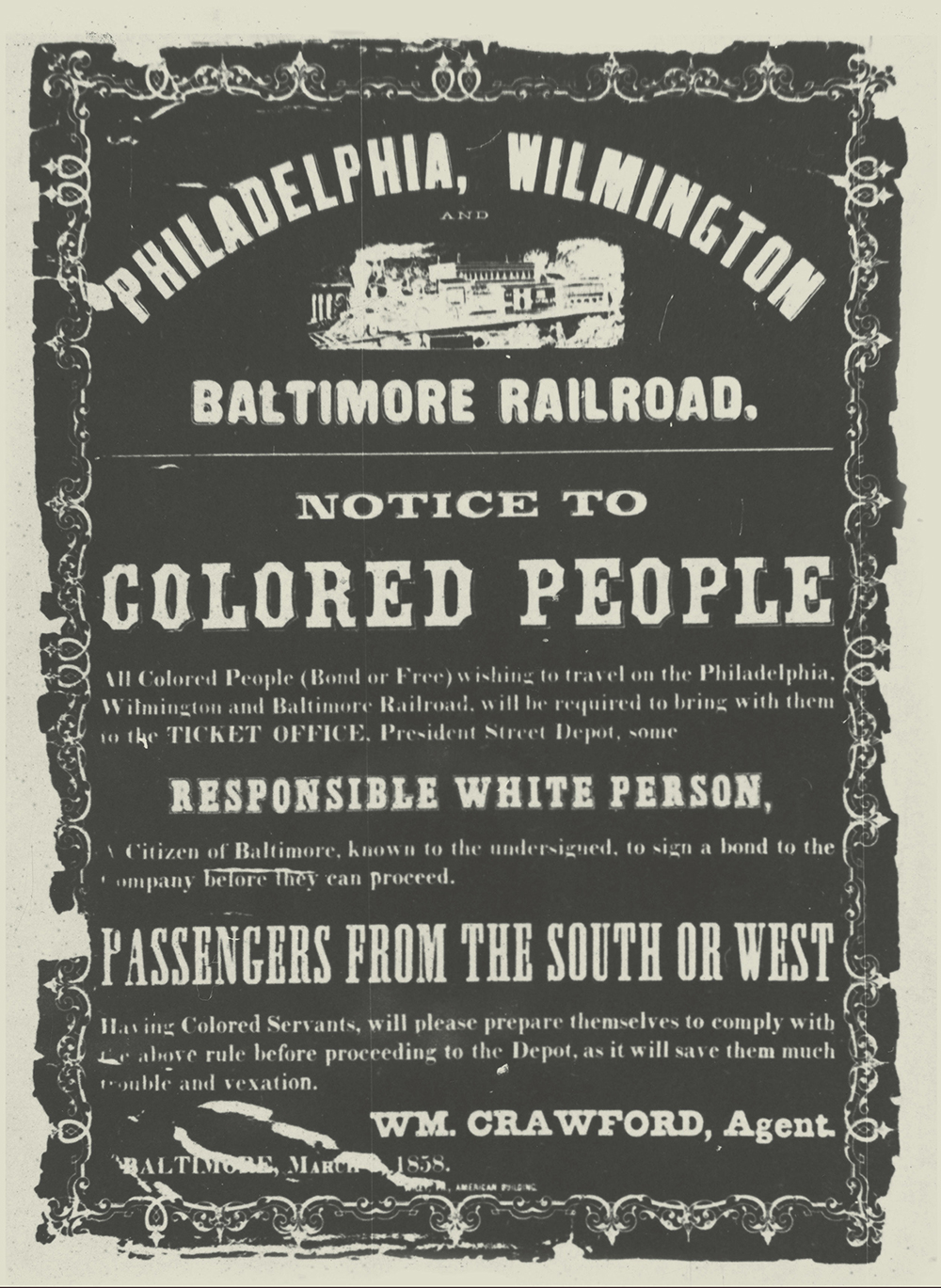
![]()
Railroads became a path to freedom for many African Americans in the 1800s. These freedoms were freedom from slavery, financial freedom, and the freedom to support the Union war effort. The B&O Railroad had a profound impact on supporting these freedoms in the mid 1800s. Your Task: Use the arrows to scroll through each image. Think about how the people in the image may be using the railroad to achieve freedom and then answer the questions that follow.
Your Task: Use the arrows to scroll through each image. Think about how the people in the image may be using the railroad to achieve freedom and then answer the question that follows.
![]()
![]()
![]()
![]()
![]()
Railroad of Hope

Enslaved people created a coded language using railroad terms to secretly communicate with each other to successfully travel the Underground Railroad to freedom
YOUR TASK: Using the following quote from Harriett Tubman, drag each of the railroad terms she uses in the quote to the hidden meaning used with the Underground Railroad.
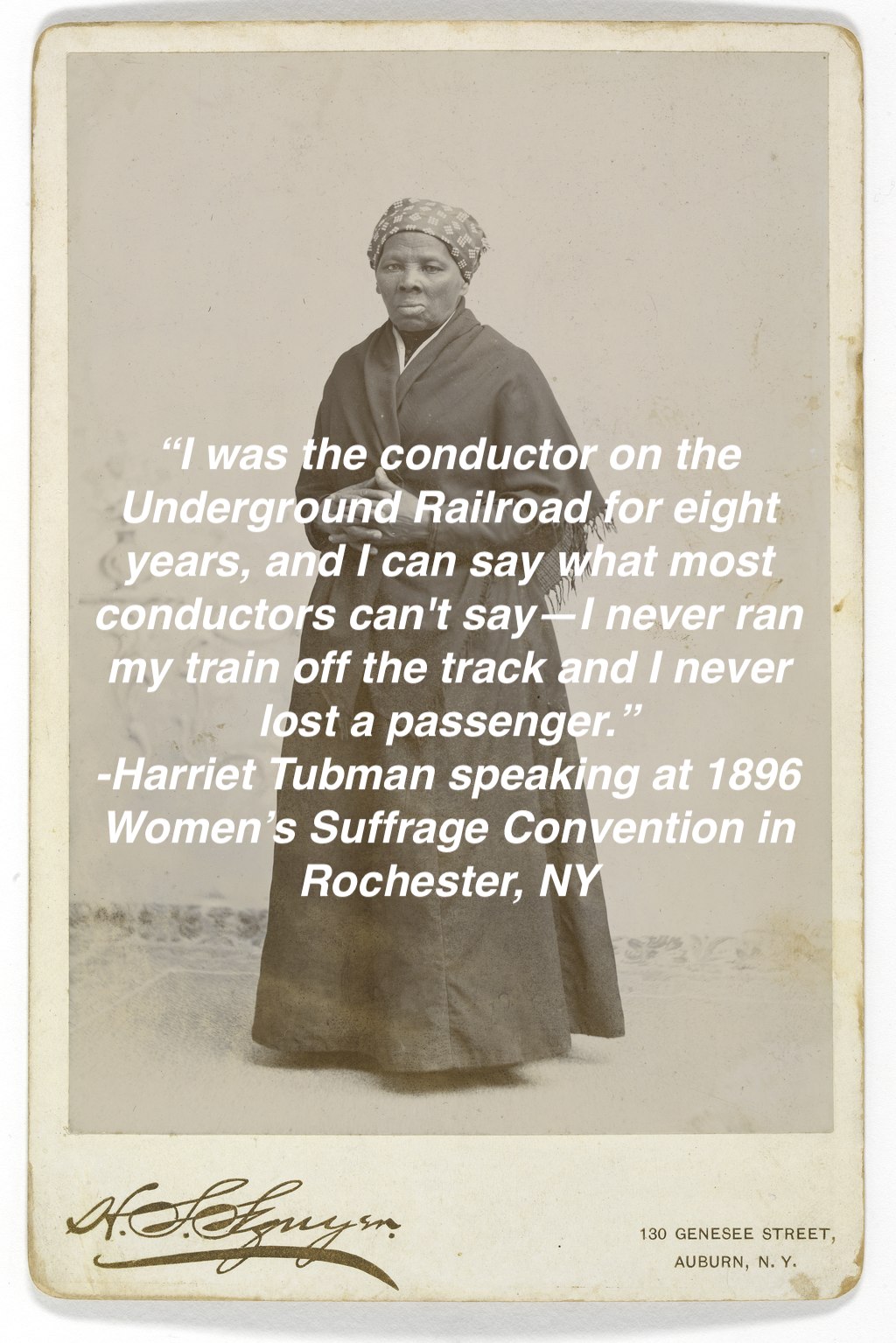
![]()
This map shows the American railroad network in 1878. In the east of the country, enslaved people seeking their freedom on the Underground Railroad often tried to reach Philadelphia – the southernmost major city in a free state.
Your Task: Find Richmond, Virginia on the map and follow the various railroad lines to Philadelphia. In the list below, put in order the railroad companies a Freedom Seeker traveling from Richmond to Philadelphia would have traveling on.
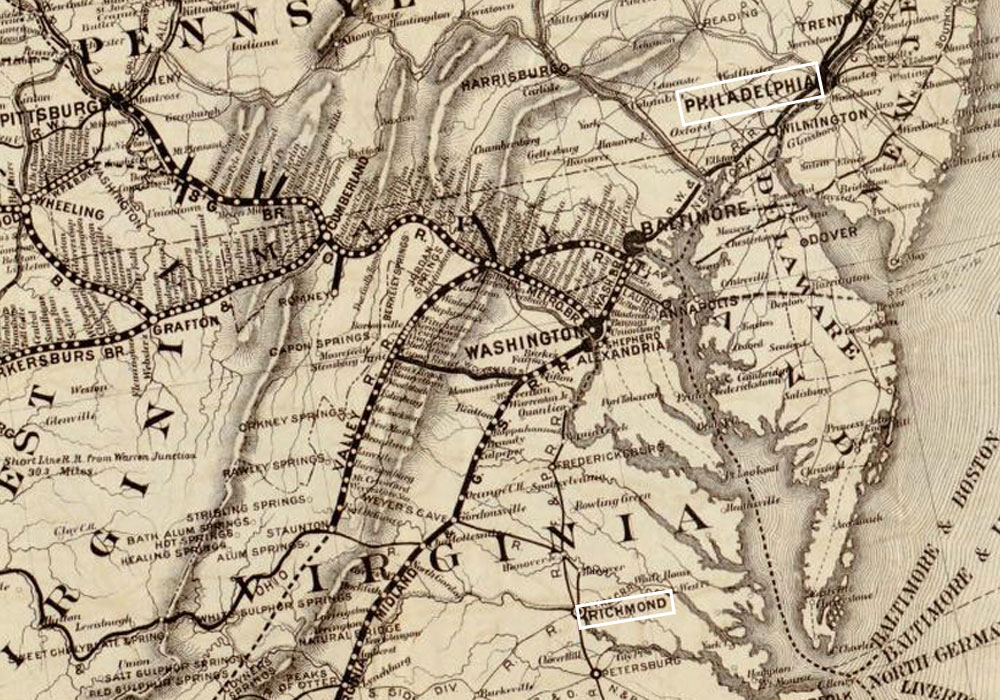
![]()
Henry Box Brown shipped himself in a box from Richmond to Philadelphia to take back his freedom from slavery. The precarious journey took 27 hours.
Your Task: Click on the part of this illustration of Henry Box Brown emerging from his box where it tells you the size of the box. Then, match the correct answers to the questions that follow.
Library Company of Philadelphia
![]()
Ellen Craft knew that African Americans needed a white person to accompany them in order to get a train ticket. Since she had a light skin tone, Ellen pretended to be her husband William’s enslaver to purchase their tickets.
YOUR TASK: Drag the slider to compare the two portraits Ellen Craft from the 1800s. One is how she normally looked and the other shows her in disguise. Then, answer the question below.
B&O RR Museum Archives
![]()
William Craft, after becoming free, wrote an autobiography called Running a Thousand Miles for Freedom. In the book, he shares that he and his wife traveled the Underground Railroad at Christmas time.
YOUR TASK: Click on the sentence from the passage below that tells us why Christmas made such a good time to take this journey.
Passage from William Craft’s autobiography that discusses talking about their journey at Christmas, page 34-35 (William Still Christmas): Running a Thousand Miles for Freedom by William Craft
![]()
The document below is hand-written notes from a meeting of B&O leaders in 1850. In this meeting, they discuss a legal matter where an enslaved person used the B&O Railroad to reach freedom and their enslaver is asking the B&O to pay them money for the loss. The B&O Railroad agrees to pay the fees.
YOUR TASK: Read the original or transcribed copy of the highlighted text and answer the question below.
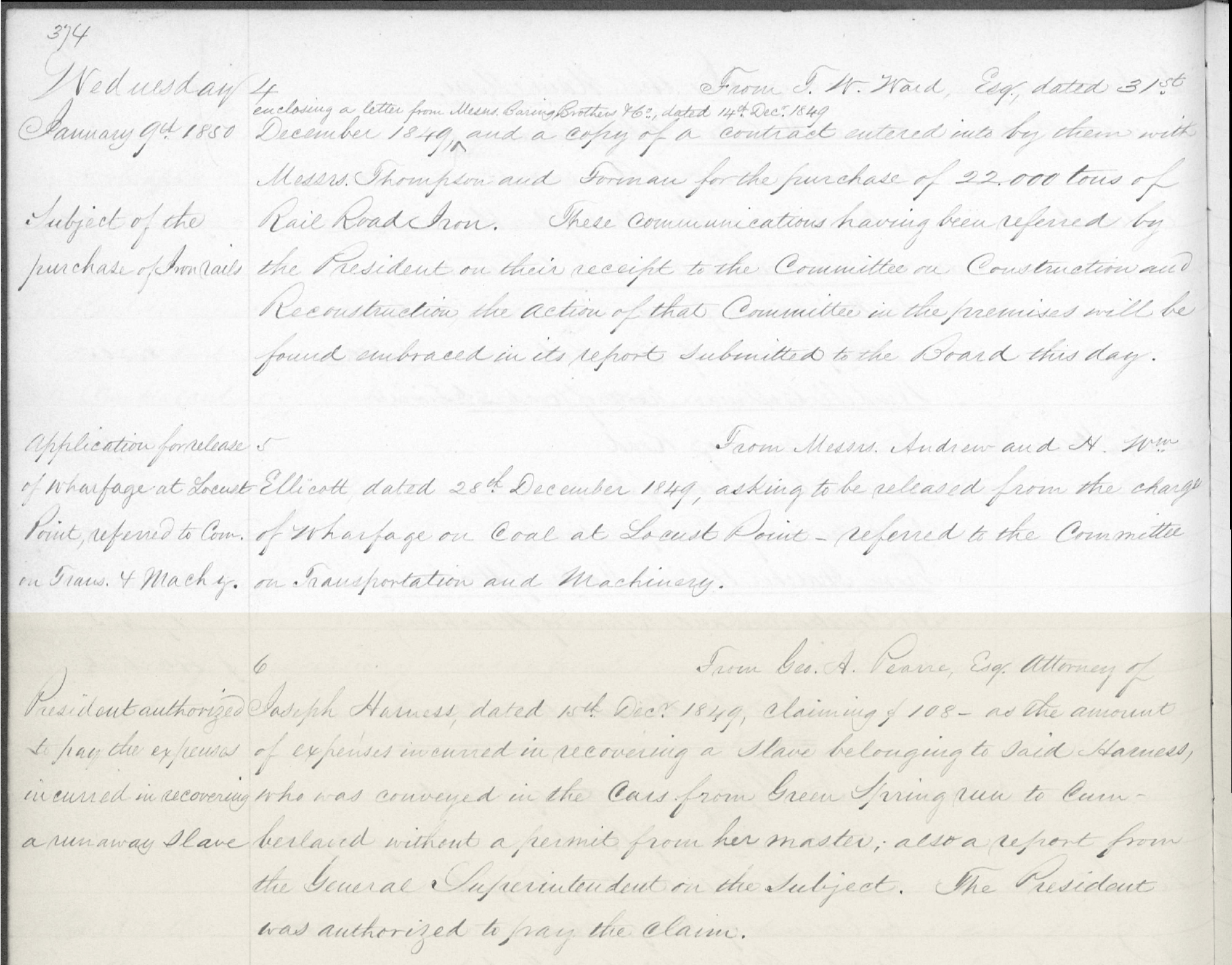

![]()
The 13th Amendment to the United States Constitution officially abolished slavery. This is the official document detailing the amendment and signed by top leaders of the executive and legislative branches of the US government.
YOUR TASK: Review the document and then drag the labels for important parts of this legal document from the bottom to the correct place on the document.
![]()
The B&O Railroad Museum has documented 27 Freedom Seekers that used the B&O Railroad.
YOUR TASK: Click on the map below and explore the routes there 27 Freedom Seekers took to answer the question below.
![]()
Roadmap to the Future

By the 1920s, The Pullman Company employed more Black Americans than any other company in the country. These workers were primarily hired as Porters, ensuring each passenger was comfortable and had a luxurious travel experience. For many African Americans, this was their first job that paid fair wages. This document is an internal document from the Pullman Company.
YOUR TASK: Review the information in the document to answer the questions below. You will notice that there is some terminology used to describe Black employees that we do not use anymore. It was common prior to the Civil Rights Movement for African Americans to be called “negroes”, a term that we find to be outdated and inappropriate today, though at the time it was not considered offensive.
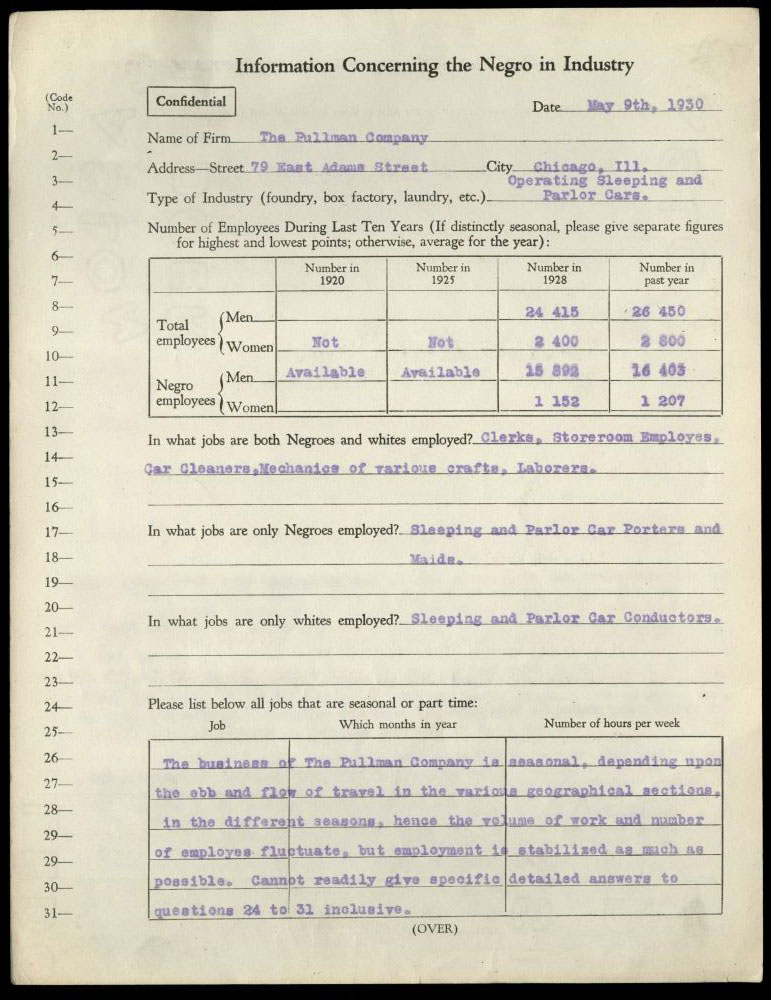
![]()
![]()
![]()
![]()
In 1925, A. Phillip Randolph founded the Brotherhood of Sleeping Car Porters, the first union for Black people, which represented railroad porters like the Pullman Porters.
YOUR TASK: Use the arrows below to view the photograph, which has been split into three different sections. Read the words and look at the people shown in each section of the photo to answer the questions about what you see.
Image of A. Phillip Randolph during the 1963 March on Washington. National Archives
![]()
![]()
Morgan Choir Ensemble & Wordsmith
After slavery is abolished, Southern states instituted laws that continued to restrict the rights of African Americans, like the Jim Crow segregation laws. As a result, African Americans began to leave the South in large numbers to find new opportunities and greater equality in the North. This is known as the Great Migration.
Your Task: This chart shows us the percentage of America’s Black population living in the South throughout our nation’s history. Click on the decade on the chart where the population of African Americans started to decrease rapidly in the South due to the Great Migration.
Data pulled from “http://mapmaker.rutgers.edu/REFERENCE/Hist_Pop_stats.pdf”

![]()
The Great Migration created new communities of African Americans across the United States as never before. By the time the route map below was made in 1947, the B&O Railroad’s rail network extended across much of the country.
YOUR TASK: Find the Southern city of Columbia, South Carolina. Follow the lines of the railroad out of Columbia heading north until you reach the closest city where you could transfer to the B&O Railroad to continue your train journey throughout the north. Click on that train station.
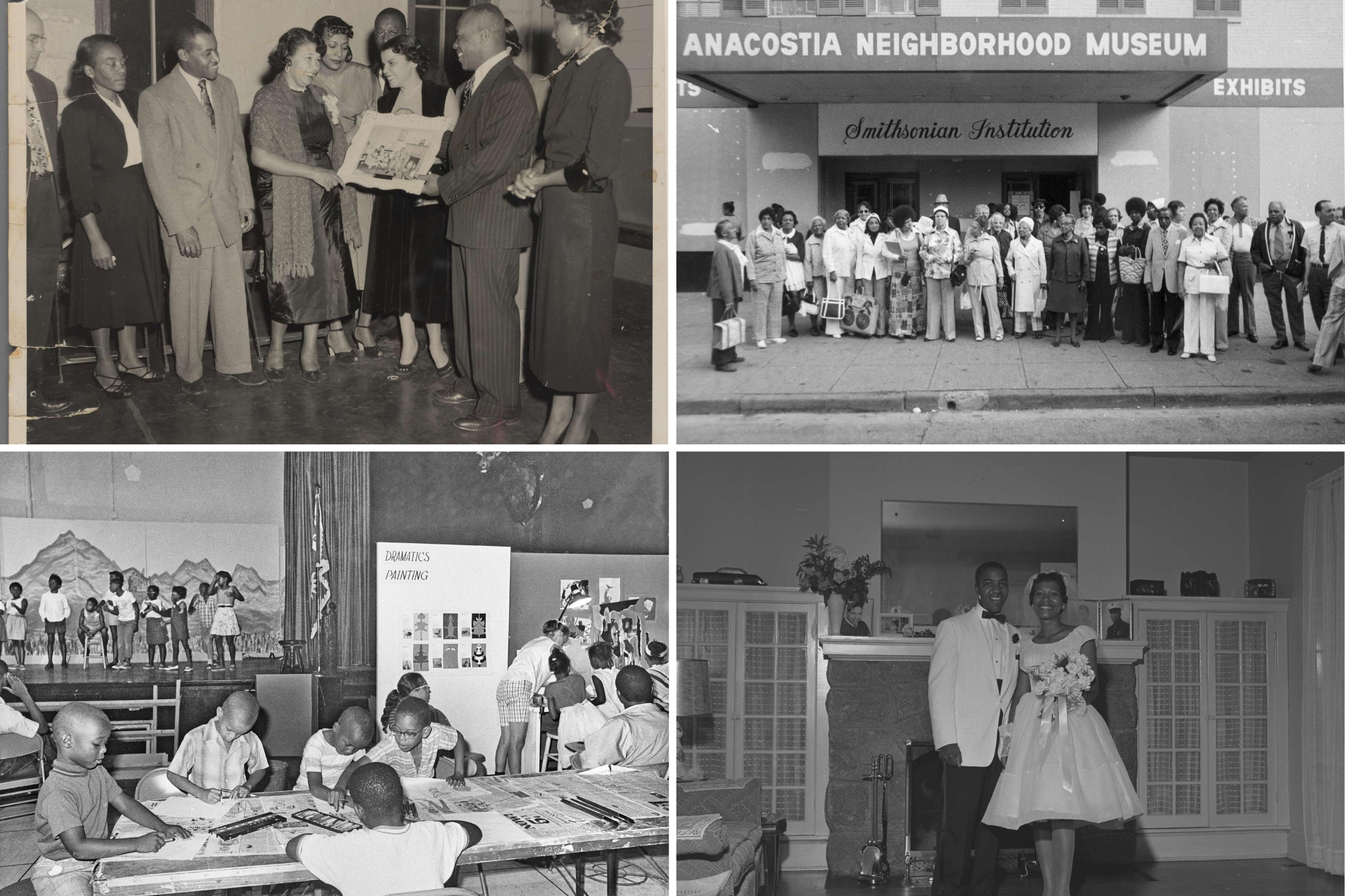
B&O RR Museum Archives
Anacostia Community Museum Archives
![]()
Throughout this movement, we have learned about important historic milestones in Black history throughout the 20th Century and their connection to the railroad.
YOUR TASK: Use the timeline below to sort the milestones described in this movement in chronological order.
![]()
This project was made possible through the support of the National Park Service and in partnership with the Baltimore Symphony Orchestra and Wordsmith.
This material is based upon work assisted by a grant from the Association for the Study of African American Life and History (ASALH). Any opinions, findings, and conclusions or recommendations expressed in this material are those of the author(s) and do not necessarily reflect the views of ASALH or the Department of the Interior.
![]()

Jonathon Heyward, Music Director
Marin Alsop, Music Director Laureate
Jeri Lynne Johnson, Conductor
Wordsmith, Spoken Word Artist
Jonathan Carney
William Esteban Chiquito Henao
Boram Kang
Kevin Smith
Holly Jenkins
Chelsea Kim
Wonju Kim
Gregory Kuperstein
Gregory Mulligan
Sunjoo Park
Ellen Pendleton
Agnes Tse
Andrew Wasyluszko
Jerry Xiong
Qing Li
Ivan Stefanovic
Leonid Berkovich
Haekyung Ju
Chisa Kodaka
Michael Rau
Allison Taylor
James Umber
Adam Wu
Lisa Steltenpohl
Jacob Shack
Karin Brown
Erica Gailing
Helen Hess
Peter Minkler
Alaina Rea
Maria Semes
Colin Sorgi
Jeffrey Stewart
Darius Skoraczewski
Lachezar Kostov
Jaime An
Bo Li
Holgen Gjoni
Seth Low
Esther Mellon
Kristin Ostling
Lukasz Szyrner
David Sheets
Nina DeCesare
Alex Hiller
Mark Huang
Jonathan Jensen
Eric Stahl
Christine Murphy
Marcia McHugh
Amal Gochenour
Katherine Needleman
Melissa Hooper
Michael Lisicky
Jane Marvine
YaoGuang Zhai
Jaewon Kim
Vitor Trindade
William Jenken
Harrison Miller
Julie Green Gregorian
Schuyler Jackson
Sean Gordon
Gabrielle Finck
Megan Hurley
Lisa Bergman
Austin Larson
Jackson Prasifka
Beth Graham
Andrew Balio
René Shapiro
Nathaniel Hepler
Matthew Barker
Aaron LaVere
Jeremy Buckler
Randall S. Campora
Aubrey Foard
James Wyman
Edouard Beyens
John Locke
Brian Prechtl
Sarah Fuller
Lura Johnson
Singers from Morgan State University
Samone Scriber
Nazarne Maloney
Asia Haynie
Jaillah Wehye
Oguchi Ebunine
Darrin Scott
Dorian Forbes
Cameron Potts
World premiere performance recorded January 15, 2024
A Robert E. Meyerhoff and Rheda Becker Community Performance
Symphony in the City series supported by Presenting Sponsor BGE